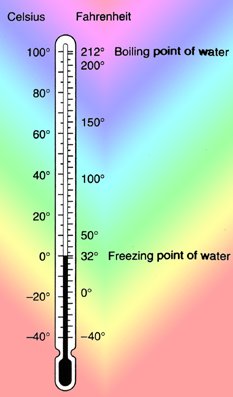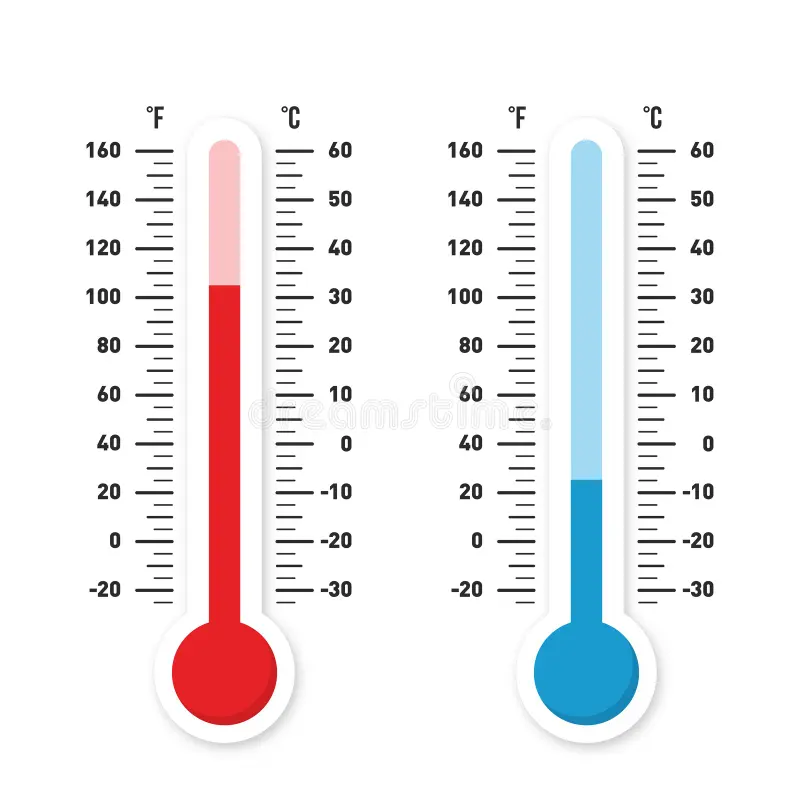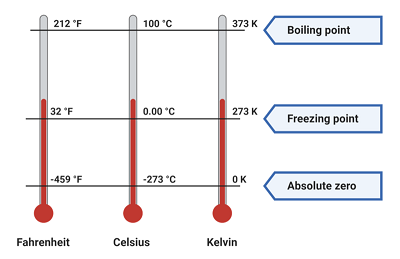Temperature Converter
Edit me from admin panel...
Share on Social Media:
Top Temperature Converter Tools: Easily Convert Celsius to Fahrenheit & More
Looking for a quick way to convert temperatures? This article reviews top temperature converter tools to help you switch between Celsius, Fahrenheit, and Kelvin effortlessly. From online calculators to mobile apps and browser plugins, we cover the best options for your needs.
Key Takeaways
Numerous tools such as online calculators, mobile apps, and browser plugins facilitate quick and easy temperature conversions between Celsius, Fahrenheit, and Kelvin scales.
Understanding the distinct characteristics and historical contexts of the Celsius, Fahrenheit, and Kelvin temperature scales is essential for accurate conversions and their practical applications in various domains.
Practical applications of temperature conversion are extensive, from ensuring recipe accuracy in cooking and baking, providing accurate weather reports, to standardizing scientific measurements in research.
1 Quick Temperature Conversion Tools

In an increasingly digital world, temperature conversion has become a breeze. No longer do we need to fuss with complicated formulas or mental arithmetic. Instead, we have a plethora of quick and convenient tools at our disposal, designed to convert temperatures between the Celsius, Fahrenheit, and Kelvin scales effortlessly.
Online Calculators
If you’re in search of a hassle-free way to convert temperatures, online calculators are a great option. Websites such as Newark and NIST host calculators capable of converting temperatures between Celsius, Fahrenheit, and Kelvin. These tools make conversions as simple as a few clicks, doing away with the need for intricate calculations.
Mobile Apps
If you’re always on the move, mobile apps could provide the convenience you need for temperature conversions. Try apps such as ‘Unit Converter’, ‘Convert Units’, or ‘Temperature Converter’—available on iOS and Android platforms—offering a wide array of conversion options.
Whether you’re a student, a professional, or just someone who needs to convert temperatures on the fly, these apps have got you covered.
Widgets and Plugins
If you’d rather not leave your browser for conversions, widgets and plugins are the way to go. Resources like Weather.com and the Chrome Web Store provide plugins that enable temperature conversions without interrupting your browsing.
Firefox users can also enjoy this convenience with the ‘Convertor’ plugin.
Understanding Temperature Scales

Grasping the concept of temperature scales is fundamental to proficiently converting temperatures. The Celsius, Fahrenheit, and Kelvin scales are the most widespread. Each scale, developed for distinct purposes, possesses unique characteristics that render them suitable for various applications.
Celsius Scale

The Celsius scale, also referred to as the centigrade scale, was created by the Swedish astronomer Anders Celsius in the 18th century. This celsius temperature scale is widely used for measuring temperature in scientific and everyday applications. It sets the freezing point of water at 0 degrees and the boiling point at 100 degrees under standard atmospheric conditions.
Countries utilizing the metric system commonly employ this scale, and it’s a staple in many scientific contexts as well as routine temperature readings globally.
Fahrenheit Scale

The Fahrenheit temperature scale, primarily used in the United States and its territories, was developed by Daniel Gabriel Fahrenheit in the early 18th century. It sets the freezing point of water at 32 degrees and the boiling point at 212 degrees under standard atmospheric pressure on the Fahrenheit scale.
One fascinating detail about the Fahrenheit scale is its alignment with the Celsius scale at -40°, indicating that -40°F is equivalent to -40°C.
Kelvin Scale
The Kelvin temperature scale, developed by Lord Kelvin in the mid-19th century, is based on the concept of absolute zero, the theoretical point where all molecular motion ceases. Unlike the Celsius and Fahrenheit scales, the Kelvin scale does not use degrees. Instead, it measures temperature in Kelvins (K), with 0K being absolute zero.
This scale finds its primary use in scientific temperature-related calculations, including those associated with the ideal gas law.
Other Temperature Scales
Aside from the three main scales, there are other less commonly used temperature scales like the Réaumur and Rankine scales. The Réaumur scale was widely utilized for scientific and industrial purposes, especially in France and Germany, and became commonly adopted in certain parts of Europe..
The Rankine scale, developed in the 19th century, is primarily used in engineering calculations related to thermodynamic processes.
How to Convert Temperatures

Once you grasp the specific formulas and steps, converting temperatures between various scales becomes quite uncomplicated. This understanding can be particularly handy when working with temperature scales uncommon in your area.
Converting Celsius to Fahrenheit
For converting Celsius to Fahrenheit, take the Celsius temperature, multiply it by 1.8 (or 9/5), and add 32. This yields the Fahrenheit equivalent. For instance, converting 26 degrees Celsius to Fahrenheit would involve the calculation °F = (26 × 9/5) + 32, resulting in 78.8°F.
Temperature Converter by PagesTools.com
PagesTools.com features a convenient Temperature Converter among its unit converter tools, allowing you to convert between different temperature units such as Celsius, Fahrenheit, and Kelvin scales.
Converting Fahrenheit to Celsius
To convert Fahrenheit to Celsius using the PagesTools.com converter, you simply subtract 32 from the Fahrenheit temperature, multiply the result by 5, and then divide by 9.
For example, to convert 70°F to Celsius, you would calculate (70 − 32) × 5/9 ≈ 21.1°C.
Converting Celsius to Kelvin
Converting Celsius to Kelvin is even simpler: you just add 273.15 to the Celsius temperature. So, to convert 25°C to Kelvin, you would calculate 25 + 273.15, resulting in 298.15 K.
Common Temperature Conversion Formulas
If you’re one to tackle the math independently, we can examine some prevalent temperature conversion formulas. Present in most textbooks, these formulas facilitate conversions among Celsius, Fahrenheit, and Kelvin.
Celsius to Fahrenheit Formula
As mentioned earlier, to convert Celsius to Fahrenheit, the temperature conversion formula is °F = (°C × 1.8) + 32. The 1.8 in the formula represents the ratio of the temperature difference in Fahrenheit to Celsius, also known as the slope in the equation.
Fahrenheit to Celsius Formula
On the other hand, the formula to convert Fahrenheit to Celsius is °C = (°F − 32) × 5/9. Here, the subtraction of 32 from the Fahrenheit temperature aligns the zero points of the Fahrenheit and Celsius scales, while the multiplication by 5/9 adjusts for the difference in the temperature increments between the two scales.
Celsius to Kelvin Formula
And lastly, to convert Celsius to Kelvin, you use the formula °C + 273.15 = K. This is because the Kelvin scale starts at absolute zero, which is 273.15 degrees below the freezing point of water on the Celsius scale.
Practical Applications of Temperature Conversion
Having acquainted yourself with the fundamentals of temperature conversion, you might question its practical utility. In reality, temperature conversion finds extensive use in a variety of areas, from culinary practices like cooking and baking to weather forecasting and scientific exploration.
Cooking and Baking
In the kitchen, temperature conversion can make or break a recipe. If a recipe calls for a specific oven temperature in Celsius, but your oven dial is in Fahrenheit, temperature conversion can save the day. Similarly, if you’re following a recipe from a different region that uses a different temperature scale, converting temperatures can help you achieve the desired cooking results.
Weather Forecasting
In weather forecasting, meteorologists convert temperatures between Celsius and Fahrenheit to provide accurate weather reports tailored to different regions. This helps in comparing weather data from different parts of the world and preparing appropriately for travel or understanding local and international weather reports.
Scientific Research
Within scientific research, temperature conversion plays an essential role in ensuring accurate measurements, particularly in fields like chemical engineering and thermodynamics. It aids in the standardization of data in internationally collaborative experiments, ensuring harmonious use of units among team members.
Moreover, the Kelvin scale is extensively used in scientific research due to its absolute nature and relevance in thermodynamic calculations.
Measuring Temperature Accurately
Precise temperature measurement is crucial in diverse contexts, ranging from kitchens to laboratories. To accomplish this task, high-precision instruments like calibrated thermometers and digital sensors are indispensable.
Thermometers
Thermometers, a type of liquid expansion device, come in several forms, including mercury and organic liquid thermometers. However, mercury thermometers are not recommended due to the risk of breakage and mercury poisoning.
On the other hand, infrared thermometers measure temperature without direct contact, making them ideal for measuring surface temperatures from a distance. Yet, they can sometimes be inaccurate if not used properly.
Digital Sensors
Digital sensors offer a modern solution for temperature measurement. They convert physical quantities into discrete values, which are easy to process and integrate with digital systems. Moreover, digital sensors are less susceptible to noise interference compared to analog sensors, offering more reliable data.
Calibration Techniques
Calibration is a crucial aspect of maintaining the accuracy of temperature measuring instruments. Regular calibration of thermometers is necessary, especially in scientific and industrial settings, to ensure that they provide accurate and consistent readings over time.
Historical Context of Temperature Scales
Before wrapping up, let’s pause to recognize the historical contributions and the intellects that shaped the temperature scales we employ today. The advent of modern thermometers and temperature scales in the early 18th century marked a significant progress from the rudimentary techniques prevalent before the 17th century.
Anders Celsius
Anders Celsius, a Swedish astronomer, is known for:
developing the Celsius scale in the 18th century
being a professor of astronomy at Uppsala University
building the Uppsala Observatory
publishing a collection of observations of the aurora borealis.
His scale, which set the freezing point of water at 0 degrees and the boiling point at 100 degrees, is widely used around the world today.
Daniel Gabriel Fahrenheit
In contrast, the Fahrenheit scale, developed by Daniel Gabriel Fahrenheit in the early 18th century, set the freezing point of water at 32 degrees and the boiling point at 212 degrees. Fahrenheit used a specific mixture of ice and salt to define zero degrees on his scale and initially marked 100 degrees as the average human body temperature.
Lord Kelvin
Finally, Lord Kelvin, also known as William Thomson, developed the Kelvin scale based on the concept of absolute zero. Unlike the Celsius and Fahrenheit scales, the Kelvin scale does not use degrees, and its zero point represents the theoretical point where all molecular motion ceases. The Kelvin scale is primarily used in scientific calculations related to temperature.
Summary
In conclusion, understanding temperature conversion tools and scales is essential in various aspects of our everyday lives, from cooking and baking to weather forecasting and scientific research. We’ve journeyed through the history of temperature scales, learned about different temperature conversion tools, and explored the significance of accurate temperature measurement. Whether you’re a student, a professional, or simply curious about the world around you, mastering temperature conversions can be an enlightening and practical skill to have.
Frequently Asked Questions
What is the formula for converting Celsius to Fahrenheit?
To convert Celsius to Fahrenheit, use the formula °F = (°C × 1.8) + 32.
How do I convert Fahrenheit to Celsius?
To convert Fahrenheit to Celsius, subtract 32 from the Fahrenheit temperature, multiply the result by 5, and then divide by 9. This will give you the Celsius temperature without the need for a complex formula.
What is the Kelvin scale used for?
The Kelvin scale is primarily used for scientific calculations related to temperature, such as the ideal gas law.
What temperature scales are commonly used in the United States?
The commonly used temperature scale in the United States is Fahrenheit.
Where can I find online tools for temperature conversion?
You can find online temperature conversion calculators on websites like Newark, NIST, and PagesTools.com.